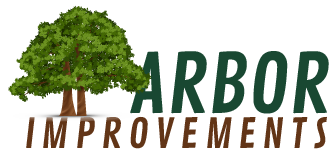At first glance, a dead tree may seem like a harmless part of the landscape, a testament to the cycles of nature. However, the presence of dead trees can be deceiving. Dead trees can pose major risks to people and property, becoming a potential hazard. Today, Arbor Improvements will share the importance of dead tree removal for the safety of your property and the well-being of everyone nearby.
Are Dead Trees Harmful?
When a tree dies, it loses its ability to take up water and nutrients. This results is a gradual breakdown of the tree’s structural integrity. Over time, a dead tree becomes increasingly unstable, and it can collapse without warning. When a tree collapses it could damage property, utility lines, and in some cases, even injure people. In addition, dead trees can become a breeding ground for pests, such as termites, beetles, and fungi, which can then spread to other healthy trees and plants on your property.
Why are Tree Maintenance Inspections Important?
Given the risks of a dead tree, it is important to regularly inspect all the trees on your property. Signs that a tree may be dead or dying include bare branches, peeling bark, fungal growth, and a lack of leafy growth during the growing season. Any tree showing these signs should be assessed by a professional arborist. They can determine the tree’s health status and recommend appropriate action, whether it’s treatment or removal.
What is the Process of Removing Dead Trees?
Dead tree removal is not a task to be taken lightly. It requires knowledge, skills, and the right equipment. Arborists, that have had the proper training, are best equipped to handle this job. They can safely cut the tree to control its fall and avoid causing damages or potential harm. Arborists are trained to handle a chainsaw and other tools safely and efficiently. Depending on the size of the tree there are different methods for removal from sectional removal to cutting down the entire tree at the base. To ensure a dead tree is safely removed, it is highly recommended that you contact a professional arborist or tree service.
Should I Leave Stump Grindings?
Once the dead tree has been safely cut down and removed, you will be left with a stump. While it might be tempting to leave it, remember that a stump can also pose a tripping hazard, take up valuable space, and attract pests. Stump grinding is the most common method to handle leftover stumps. A professional will use a specialized machine to grind the stump down until it’s below ground level. This effectively eliminates any of the hazards.
Tree Trimming, Removal & More in Greenville, Greer, Mauldin, Simpsonville, Union and Spartanburg, SC
While a dead tree might not seem like an immediate concern, the risks it poses to your property’s safety are great. When you spot a dead or dying tree, you can protect your property, your family, and your peace of mind. Remember, when it comes to tree removal, safety and professional handling are important. If you have a dead or dying tree that needs to be removed, contact Arbor Improvements and schedule our services today.


